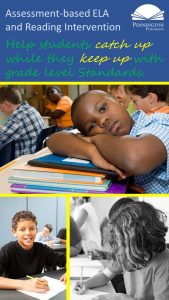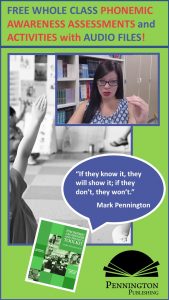Which High Frequency Words?
Most teachers and reading specialists advocate some teaching of high frequency words: the question is which ones make sense to teach and which ones don’t make sense to teach?
First, let’s dispel a few notions about how we learn to read. It’s not a which came first, the chicken or the egg? question some still suggest. In other words, the end result is not all that matters. Witness the plethora of reading intervention classes in upper elementary and middle schools to see how many of our students can “read,” but not understand what they are “word calling.” How we get to the end result does matter. Reading does not teach phonemic awareness, nor does reading teach phonics and multi-syllabic decoding. These are prerequisite skills which students need in order to to read well.
We have plenty of reading research to positively assert that explicit, systematic phonics instruction is the most efficient approach to teaching beginning and remedial readers. The Look-Say Method of the Dick and Jane readers (sight words only instruction) and the Onset-Rime Method (b-ack, h-ack, j-ack, l-ack, p-ack, r-ack, s-ack, t-ack) have largely been placed on the dustbin of instructional approaches.
However…
We can certainly take things too far. We know some things, but we don’t know a lot of things about reading. We are only at the beginning stages of brain research.
So…
A prudent approach to both beginning and remedial reading instruction is to focus on decoding (phonics) and encoding (spelling) instruction and practice, but to also “throw in” a healthy dose of fluency practice with high frequency words.
Which High Frequency Words Not to Teach and Why
Don’t pass out flashcards or lists of high frequency reading or spelling words for students to memorize. Intuitively, it would seem to make sense to have students memorize the words that they are going to read or spell most often. However, our gut-level instincts lead us astray here.
- The Dolch and Fry word lists of the most commonly used words in basal readers were never designed to provide a list of words to study. Countless U.S. classrooms still, unfortunately, have these reading goals (and assign parents the task of teaching): 10 words by the end of kindergarten; 100 words by the end of first grade; 200 words by the end of second grade; and 300 words by the end of third grade. As a reading specialist, I’ve worked with hundreds of elementary, middle school, high school, and even community college students who can word call each of these lists, but not read with comprehension. Now, there is some sense to pre-teaching a limited number of high frequency words before beginning systematic phonics instruction.
- Similarly, the Slosson Oral Word Reading Test and San Diego Quick Assessment were only designed to test word recognition and they do provide correlations to reading comprehension, but authors Richard L. Slosson and Charles L. Nicholson, as well as Margaret La Pray and Ramon Ross respectively, never advocated using their random sample assessments as instructional tools.
- The “No Excuse” spelling word lists, floating around since Rebecca Sitton popularized this band aid approach to spelling mastery during the height of the whole language movement of the 1980s and 1990s still, unfortunately, serves as the entire spelling program for countless U.S. classrooms with absolutely no research validating its instructional validity.
Which High Frequency Words to Teach and Why
The first group of high frequency words are, indeed, words; the second and third groups are word parts.
- Heart Words: These words include one or more non-phonetic parts, also known as “the parts to learn by heart.” Or Heart Words may also designated as those sound-spelling patterns not yet taught, such as the “_ve” pattern with words such as live, love, and have. Check out how to teach Heart Words.
Get the Heart Words Assessment FREE Resource:
![]()
- High Frequency Greek and Latin Prefixes and Roots: Greek and Latin word parts make up over 50% of the words in the dictionary. Some are decodable in English, and some are not. Because of the strong reading-vocabulary connection, it does make sense to have students teach and practice the Greek and Latin high frequency prefixes and suffixes which they do not know. Like with rimes, the analogous relationships formed by morphological (meaning-based) word parts make this a sound sight words instructional focus. For example, bi means two in bicycle, just as it means two in bicameral or biped.

The Science of Reading Intervention Program
The Science of Reading Intervention Program: Word Recognition includes explicit, scripted instruction and practice with the 5 Daily Google Slide Activities every reading intervention student needs: 1. Phonemic Awareness and Morphology 2. Blending, Segmenting, and Spelling 3. Sounds and Spellings (including handwriting) 4. Heart Words Practice 5. Sam and Friends Phonics Books (decodables). Plus, digital and printable sound wall cards and speech articulation songs. Print versions are available for all activities. First Half of the Year Program (55 minutes-per-day, 18 weeks)
The Science of Reading Intervention Program: Language Comprehension resources are designed for students who have completed the word recognition program or have demonstrated basic mastery of the alphabetic code and can read with some degree of fluency. The program features the 5 Weekly Language Comprehension Activities: 1. Background Knowledge Mentor Texts 2. Academic Language, Greek and Latin Morphology, Figures of Speech, Connotations, Multiple Meaning Words 3. Syntax in Reading 4. Reading Comprehension Strategies 5. Literacy Knowledge (Narrative and Expository). Second Half of the Year Program (30 minutes-per-day, 18 weeks)
The Science of Reading Intervention Program: Assessment-based Instruction provides diagnostically-based “second chance” instructional resources. The program includes 13 comprehensive assessments and matching instructional resources to fill in the yet-to-be-mastered gaps in phonemic awareness, alphabetic awareness, phonics, fluency (with YouTube modeled readings), Heart Words and Phonics Games, spelling patterns, grammar, usage, and mechanics, syllabication and morphology, executive function shills. Second Half of the Year Program (25 minutes-per-day, 18 weeks)
The Science of Reading Intervention Program BUNDLE includes all 3 program components for the comprehensive, state-of-the-art (and science) grades 4-adult full-year program. Scripted, easy-to-teach, no prep, no need for time-consuming (albeit valuable) LETRS training or O-G certification… Learn as you teach and get results NOW for your students. Print to speech with plenty of speech to print instructional components.





